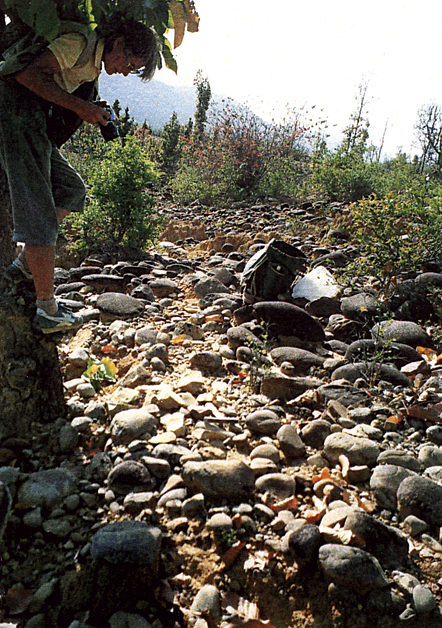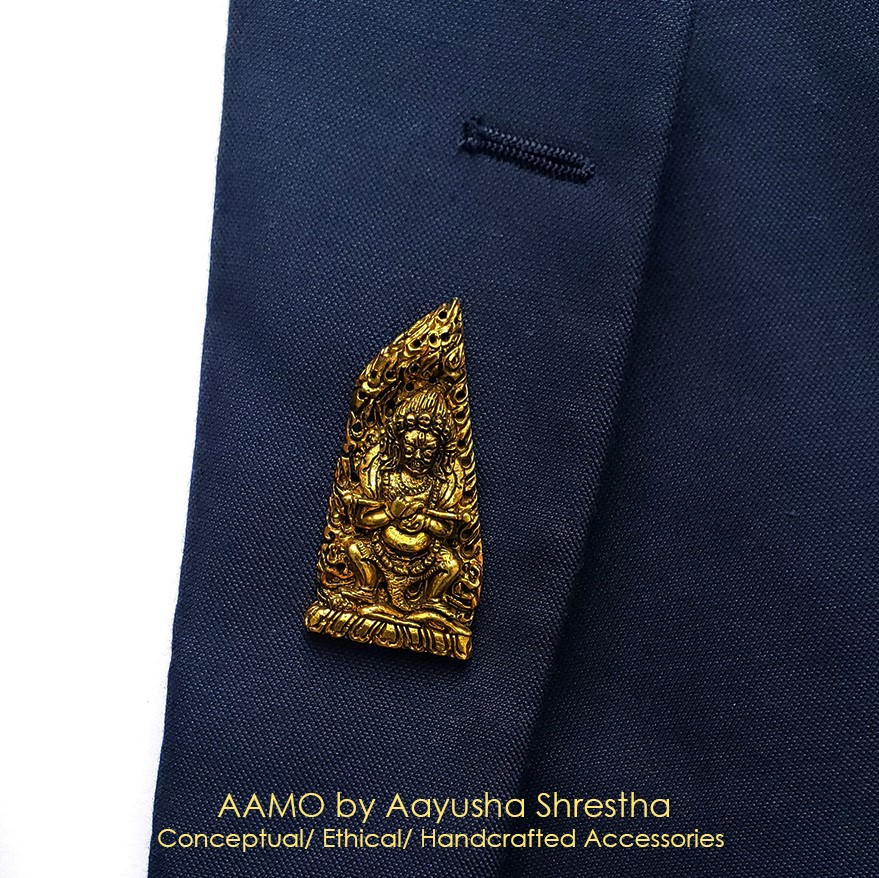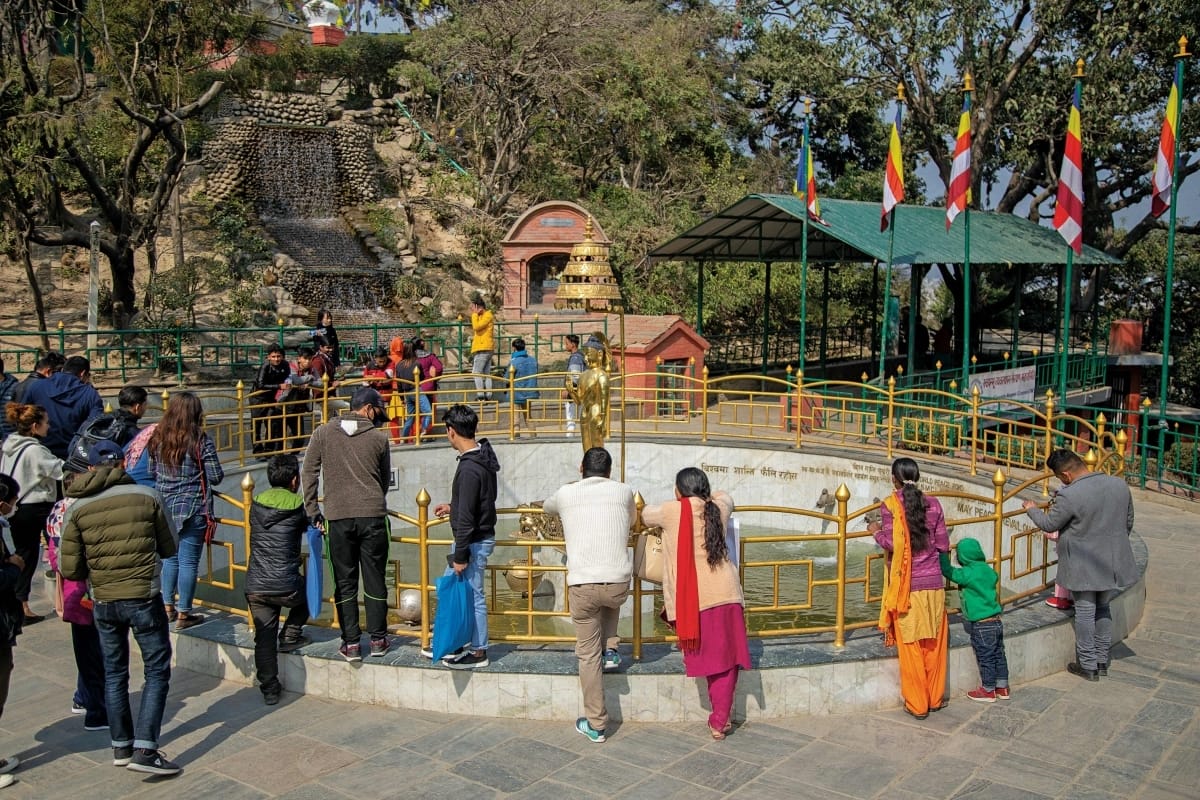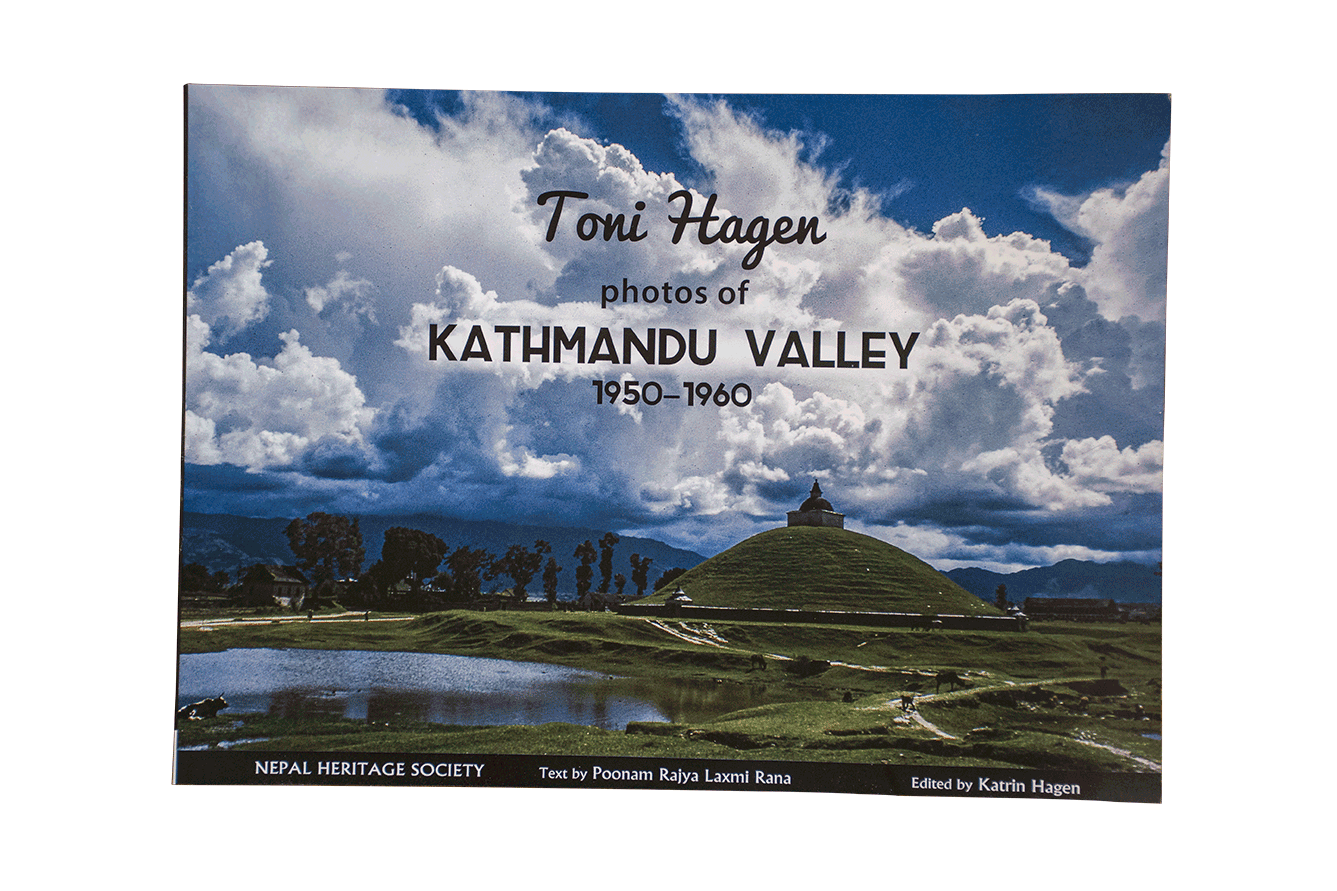German archaeologist proves migration to the Siwalik ranges during the Stone Age A review of the academic legacy of late Dr Gudrun Corvinus
Gudrun Corvinus, 2007, Prehistoric Cultures in Nepal: From the Early Palaeolithic to the Neolithic and the Quaternary Geology of the Dang-Deokhuri Dun Valleys, 2 volumes, Wiesbaden, Germany: Harrassowitz (in 2 vols., I: 383pp., II: 263pp.; CD-Rom).
 It must have been an adventurous life that she led during her 20 years of research in the Siwalik foothills of the Nepal Himalayas. In the foreword of her book Gudrun Corvinus does not forget to thank her driver Man Bahadur Gurung for navigating through trackless jungles and for getting the land cruiser out of mud holes. She points out her head porter, Man Bahadur Magar, who together with his men carried her heavy equipment of tents, work utensils and cooking equipment over steep, slippery mountain slopes and through heavy currents of streams. She thanks the cook Saila Tamang for preparing daal-bhaat in heavy rainstorms and dust storms. After the evening fire was extinguished, leopards strolled through the camp. Dr Corvinus was certainly not an armchair anthropologist.
It must have been an adventurous life that she led during her 20 years of research in the Siwalik foothills of the Nepal Himalayas. In the foreword of her book Gudrun Corvinus does not forget to thank her driver Man Bahadur Gurung for navigating through trackless jungles and for getting the land cruiser out of mud holes. She points out her head porter, Man Bahadur Magar, who together with his men carried her heavy equipment of tents, work utensils and cooking equipment over steep, slippery mountain slopes and through heavy currents of streams. She thanks the cook Saila Tamang for preparing daal-bhaat in heavy rainstorms and dust storms. After the evening fire was extinguished, leopards strolled through the camp. Dr Corvinus was certainly not an armchair anthropologist.
Before she ventured into the field, there was no definite proof of prehistoric cultures in Nepal except for some Neolithic axes. The German archaeologist qualified for the task of mapping this uncharted territory not only through her studies in geology but also in prehistory at the University of Tübingen. In the 1970s, Gudrun Corvinus was in Ethiopia on the team with Donald Johanson that unearthed the skeleton of our upright walking ancestor ‘Lucy’. Her remains were classified as a more than 3 million years old Australopithecus afarensis.
After moving from Africa to the Indian subcontinent in 1983, Dr Corvinus’ fieldwork was financed by the German Research Foundation. The areas under investigation, the Dang-Deokhuri Dun Valleys in Western Nepal, are subjected to heavy erosion due to inconsiderate deforestation. More and more people are pushing into the Siwaliks. They are thinning out the forest by indiscriminate cutting of trees. This entails a rapid denudation of soils, leaving behind only badlands.
This development must be seen in connection to the pressure caused by the Nepalese population growth. In 1960 there were nearly 9 million inhabitants; today the population stands at over 25 million. During the last 50 to 60 years, the Dang and Deokhuri valleys of the Siwaliks were turned into a desert-like landscape. A natural landmark in the Dang Valley exemplifies the reverse faults of recent natural history. Today a massive block of sandstone can be seen bedded on an inaccessible almost 20 meters high column of alluvial silt. An old farmer told Dr Corvinus that as a child he was sitting on the block while his goats were grazing all around him. At that time the terrace surface was still intact. Silt comparable to the height of a four storey building was washed away in just a span of life.
The indigenous population of the Dun Valleys are Tharus, traditional peasants. During the last 50 years the Tharu population of the fertile plains of the Terai and the Dun Valleys was settled by groups of Brahmins, Khas and Chhetris who bought up the best land for farming, turning the indigenous Tharus into labourers. The residential areas of the newly arrived and the original groups are strictly separated in the villages. Gudrun Corvinus’ sympathies undoubtedly belonged to the Tharu people whom she intuitively associated with the Neolithic population of the Dang-Deokhuri area. She admired their longhouses with thatched roofs, their storage jars and the Tharu women carrying water vessels on their head. In Nepal the Deokhuri valley is still known for its fine pottery.
The erosion which destroys the habitat of the Tharu people also exposed sites of prehistoric settlements. In another twenty years the sediments containing the findings documented in this book will have been eroded and thus they will be lost for further research.
Initially the book deals with discoveries in the Tui Valley, an appendix to the Dang Dun basin which can be regarded as a small-scale model for the whole area. Here, the Brakhuti West sites are of a special importance as they have yielded a sequence of cultural units from the Palaeolithic to the Neolithic. At the base is an Early Palaeolithic site, where the finds may be 500,000 to 700,000 years old. After a long break this layer of artefacts is followed by some 10,000 years old remains of a late Palaeolithic site. At the top of Brakuthi West, younger Neolithic remains including polished axe fragments and pottery sherds are located.
In the Dang Valley, the Gadari site on the south bank of the Babai River seems to be of particular interest. Here Dr Corvinus unearthed handaxes from the Early Palaeolithic testifying to the presence of so-called ‘Acheulian people’ in Nepal. This handaxe-producing hominid Homo erectus rarely penetrated into mountain tracts, so the discovery came as a surprise to the archaeologist. Gadari also yielded a fine Neolithic arrowhead.
It was in the Deokhuri valley where Dr Corvinus discovered the first prehistoric artefacts of her survey in December 1983 and January 1984. She singled-out the Arjun 3 Middle Palaeolithic site as the most interesting one of the Deokhuri valley. The analysis of the materials however was obstructed by theft of her field notes during a conference in Madras in 1989. Nonetheless, she could date the artefact horizon to be something between 100,000 and 70,000 years old. Arjun 3 seems to be a camp and factory site where smaller tools were produced with the help of large cobble tools.
In November 1997 the German archaeologist discovered what she calls “the finest handaxe ever found in Nepal.” It came to light in Central Nepal on the Satpati Hill and is probably more than 730,000 years old. This would be the oldest evidence of an Acheulian culture on the Indian subcontinent. Gudrun Corvinus can be credited with having demonstrated migration from India into the region of today’s Nepalese Siwalik range from the Pleistocene.
Further East in the Siwaliks, the researcher unearthed the remnants of a Mesolithic culture, the Patu Industry which flourished about 7,000 years ago at the Rato River. This culture from the early Holocene is more akin to the Southeast Asian Hoabinhian industry, named after a place of findings in Vietnam.
The prehistoric artefacts collected during this project are housed at Nepal’s National Museum at Chauni. A donation of the Nepal-German Friendship Association made it possible to construct two rooms for storage and exhibition. The book itself is a legacy for future research. It is not a final edition, but is based on a version of October 2005. Some of the author’s final corrections are still buried on a computer confiscated by the police of Pune in Maharashtra.
On New Year’s Day 2006, a real estate agent entered Gudrun Corvinus’ flat in Pune’s Koregaon Park where she had just finished writing her book. The agent wanted to force her into signing her property over to him. From visiting the scene of the crime one can imagine that she must have put up stiff resistance. Gudrun Corvinus was brutally murdered that very day. Her ashes were scattered in the Western Ghats.
Reinhold Messner
“Traditional mountaineering is the art of not dying.” Reinhold Messner is one of the most well known...










